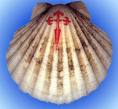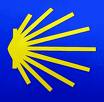The Camino de Santiago, or the Way of St. James, is an ancient pilgrimage indeed with a timeline of over 1,000 years. Pilgrims from all over Europe would come from far and near to visit the place where St. James (or Santiago) is buried: under the Cathedral of Santiago de Compostela in northwestern Spain (Galicia, to be more precise). I became another pilgrim on the Camino….
In modern days, though, not all who “do” the Camino are necessarily doing it for spiritual reasons but I would find hard to believe that most don’t get something spiritual out of the sacrifice and effort doing the Camino requires.
The Camino is a joy not only for the experience of trekking these ancient “ways”. I have to admit that the social and culinary were also part of my Camino.
I will aim to share about the experience in a couple of different ways in this and upcoming posts:
- The first way will be to simply share what everyday was like using photographs and other thoughts – whether you ever plan to or want to do it.
- The second will be by sharing what I did to prepare and do the Camino, in case you are yourself hoping to, or actually planning to, do the Camino.
Why I went
I first learned more about the Camino when I met a co-worker back in 2003 who had just done the Camino from St. Jean Pied de Port – so about 30 days’ worth of trekking (close to 800km or 500 miles). It all sounded hard and just too much time. Over the years, as we became good friends, I enjoyed hearing stories about what the Camino was like and the friendships he struck along the way. It made me curious about the Camino though I never thought I would want to “walk” for 30 days.
Years later, as I got more into trekking/hiking, I started thinking that I -some day- would want to do it (or part of it, to be more precise). Watching the movie “The Way” helped inspire me but not tons more. The coup de grace was when an organization I do treks with, Trekking for Kids, announced they would do a trek to do the Camino in the summer of 2014. That sealed the deal. Combining both my desire to do the Camino with the mission of Trekking for Kids (to improve the lives of orphaned and at-risk children around the world) was the perfect reason to go.
How we did the Camino de Santiago
The Trekking for Kids trek mixed a few days at a center for at-risk children in Essaouira, Morocco, called Bayti Centre, followed by seven days on the Camino (read more about our time at the Bayti Centre here). Because the overall trek had to be kept to less than two weeks, the starting point of the Camino had to be picked such that we could do the minimum required distance (100km for those walking; 200km for those cycling) to be able to get the “compostela” (or the certificate issued in Santiago de Compostela that validates that you did the Camino) yet stay within the desired overall trip duration. In addition, it had to allow for the travel day or two between Morocco and the start of the hike.
The preferred route was the traditional Camino Francés which is sort of parallel to the northern coast of Spain but further inland. It is likely the most popular route of all though I wonder how the other routes are (and secretly hope I can check out some day!).
This meant we would need to start the hike at the last possible point we could and still meet the minimum walking requirements: the town of Sarria, which meant we would do more than the 100km minimum (at least, 110km). There were, however, a couple of important towns right before Sarria that were worth seeing (O Cebreiro and Samos), yet we did not have time to hike through them (would have required one or two more hiking days) – so the itinerary included driving through these towns before being dropped off on the trailhead from which our hike would start.
Our Camino route
Our hiking itinerary was as follows (click on the Day to read the post for that day!):
- Day 1: Begin at Sarria. After a very short (“warm-up”) hike, we would overnight at Barbadelo.
- Day 2: From Barbadelo to Portomarín
- Day 3: From Portomarín to Palas del Rei
- Day 4: From Palas del Rei to Boente
- Day 5: From Boente to Salceda
- Day 6: From Salceda to Lavacolla
- Day 7: From Lavacolla to Santiago.
The map that follows highlights in a blue oval the town of Sarria, our starting point (immediately to the right, you will see Samos; further to the right, you will notice O Cebreiro). The purple line that connects the blue oval to Santiago de Compostela to the west (left, on the map) is the route of our itinerary.
On to Day 1!
(You may want to subscribe to this blog so you receive an email when each article is posted. Don’t worry, this is no more than three times a week so it is only three emails from ilivetotravel on a given week!)






 2010 is a Holy Year (aka Jubilee year) on the Camino de Santiago… so, if you are looking for an interesting and unique travel experience, why not walk 500 miles across Northern Spain…on an ancient pilgrimage route…and if you do it in 2010, you’ll probably be joining 200,000 or more other people!!
2010 is a Holy Year (aka Jubilee year) on the Camino de Santiago… so, if you are looking for an interesting and unique travel experience, why not walk 500 miles across Northern Spain…on an ancient pilgrimage route…and if you do it in 2010, you’ll probably be joining 200,000 or more other people!!





































